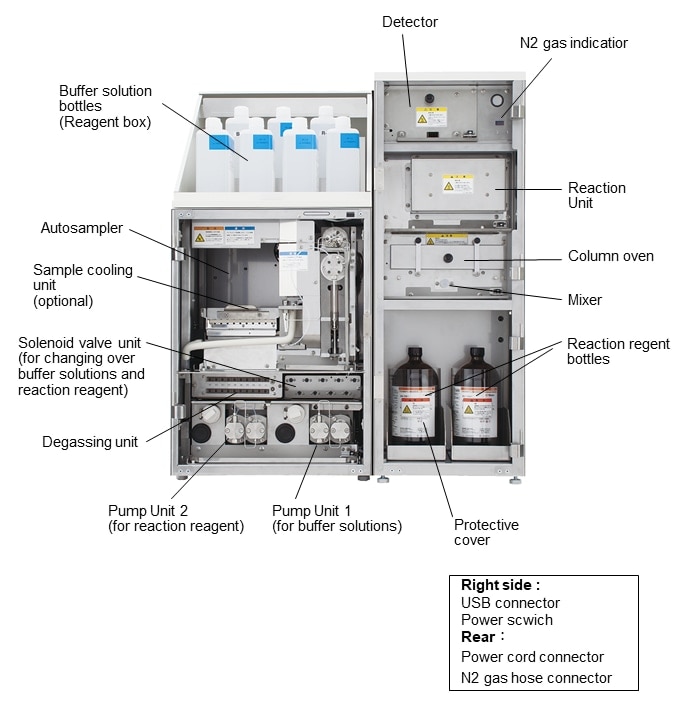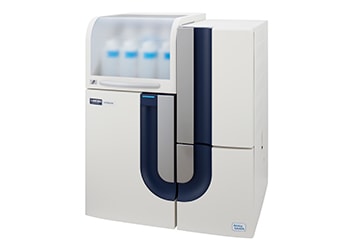Amino Acid Analyzer Basic Course

1. Principle and basics of amino acid analysis
Generally, organic compounds having -COOH (carboxyl group) and -NH 2 (amino group) in the molecular structure are called amino acids.
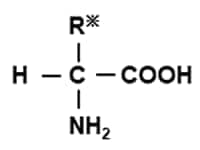
Individual organic groups are bonded to R.
Characteristics of each amino acid differ depending on the nature of R.
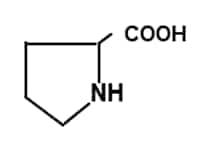
Proline has a ring structure. It shows specific optical properties different from other amino acids.
Amino acids are represented by three-letter code that are almost unified worldwide.
Table 1 Three-letter codes of amino acids
| Asp | Aspartic acid | Val | Valine |
|---|---|---|---|
| Thr | Threonine | Met | Methionine |
| Ser | Serine | Ile | Isoleucine |
| Asn | Aspargine | Leu | Leucine |
| Glu | Glutamic acid | Tyr | Tyrosine |
| Gln | Glutamine | Phe | Phenylalanine |
| Pro | Proline | Lys | Lysine |
| Gly | Glycine | His | Histidine |
| Ala | Alanine | Trp | Tryptophan |
| Cys | Cystine | Arg | Arginine |
In the field of amino acid analysis, Asparagine (Asn) and Glutamine (Gln) may be written as AspNH2 and GluNH2. Similarly, Cys may refer to Cysteine.
1) Standard amino acids (protein hydrolyzate amino acids)
The proteins that make up all animals are composed of amino acids. Amino acids that make up the proteins are called standard amino acids (protein hydrolyzate amino acids). As of today, 20 standard amino acids have been identified.

2) Physiological fluid amino acids (free amino acids)
Basic of amino acids are 20 standard amino acids mentioned above, but if you take in them as food, it will be digested and will change to various substances. These amino acids including metabolites and precursors are called physiological fluid amino acids (free amino acids). Approximately 40 physiological fluid amino acids have been identified.
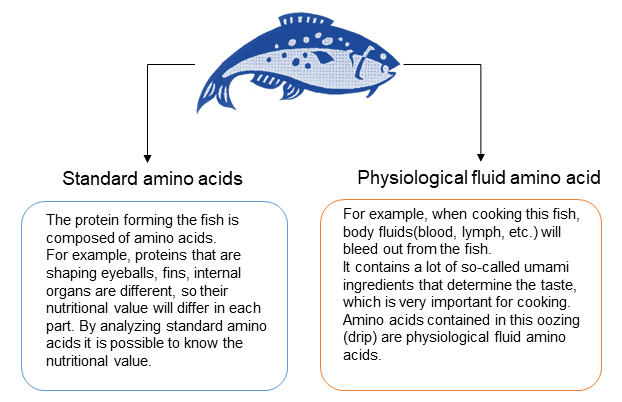
2. Method for analyzing amino acids
Most of amino acids are difficult to separate and detect because their hydrophilicity is high, and their UV absorption and fluorescence are low. With the post-column ninhydrin method, the Hitachi LA8080 Amino Acid Analyzer can afford separation and analysis of approximately 50 amino acids.
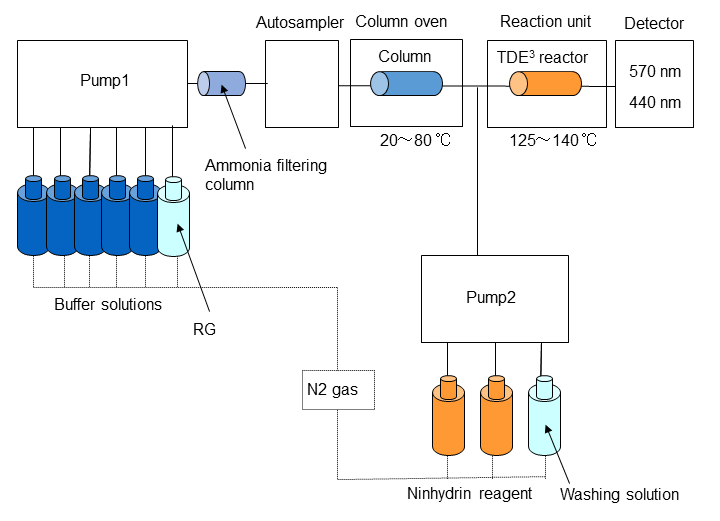
2-1. Cation exchange column and separation of amino acids

- Amino acids are charged to + in the acidic solution, and electric attraction is generated again cation exchange resin.
-
In contrast, amino acids are charged to - in the basic solution, so that they repel and pass through the cation exchange resin.
(Utilizing this chemical property, we use a sodium hydroxide solution (basic solution) for washing out residual substances in the column after analysis. It is called regeneration (RG) process.) - In amino acid analysis, separation is carried out by changing the pH of the eluent from acidic to basic.
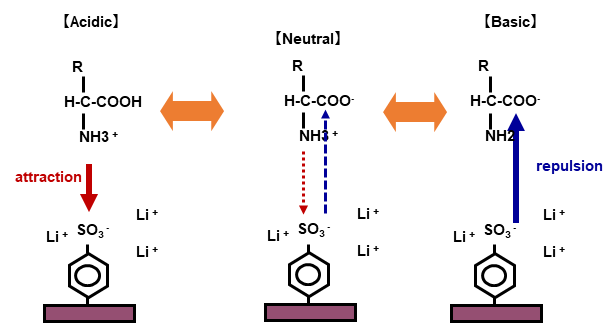
The cation exchange column has a high chemical strength and can be washed with basic solutions. However, it doesn't have very high physical strength.
Sudden pressure fluctuations may cause degradation of the column, so you should pay attention to the pressure applied to the column.
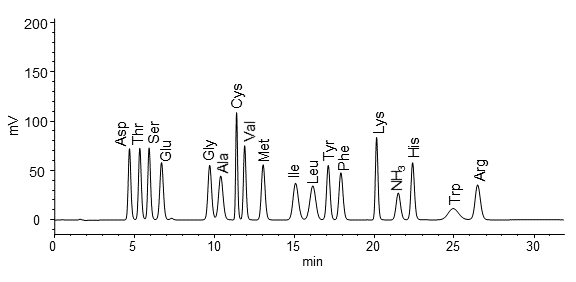
Table 2 Necessary elements for amino acid analysis buffer
| Condition | Chemicals |
|---|---|
| pH | Citric acid |
| Ionic strength | NaCl, LiCl |
| buffer capacity | Sodium citrate, Lithiun citrate |
Table 3 Other components of amino acid analysis buffer and purpose of addition
| Reagents | Porpose |
|---|---|
| Ethanol | separation of Thr-Ser |
| Benzyl alcohol | separation of Trp |
| β-thiodiglycol | anti-oxidation of sulfur-containing amino acids |
| Brij-35 | Pump pressure reduction |
| Caprylic acid | Anti-corruption |
The buffer solutions can be purchased locally. For the detail, you can ask local sales.
You can also prepare the buffer solutions according to the "Buffers preparation" section of the instruction manual (main unit). The pH value described in the instruction manual is a reference value and adjustment of pH is not necessary.
You have to use special grade reagents or reagents graded for amino acid analysis.
2-2. Derivatization of amino acids
There are two types of derivatization: pre-column and post-column. The post-column derivatization method adopted for the Hitachi High-speed Amino Acid Analyzer LA8080 has advantages such as less influence of contaminants and better reproducibility.
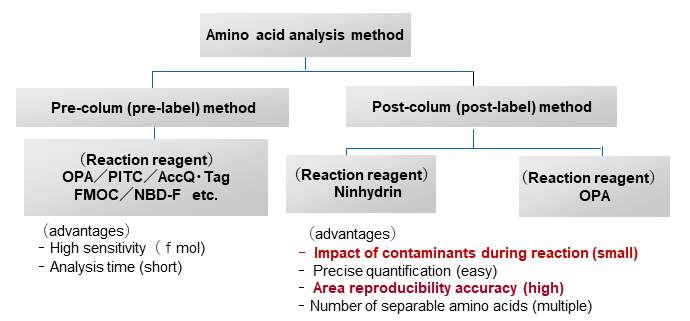
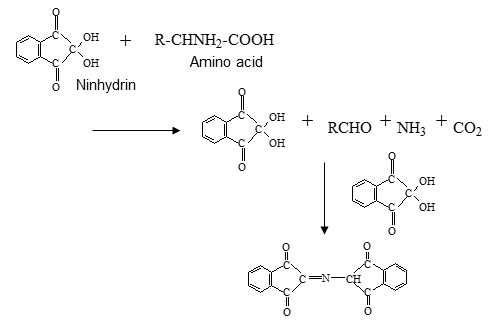
Due to a ninhydrin reaction, a blue-violet substance (Ruhemann's purple) was produced and measured with the absorbance at 570 nm. Because proline and hydroxyproline produce yellow-red substances, they were measured with the absorbance at 440 nm.
3. Inside Front Doors
